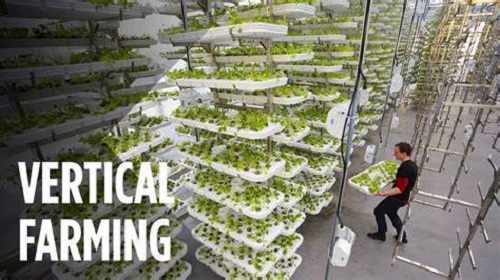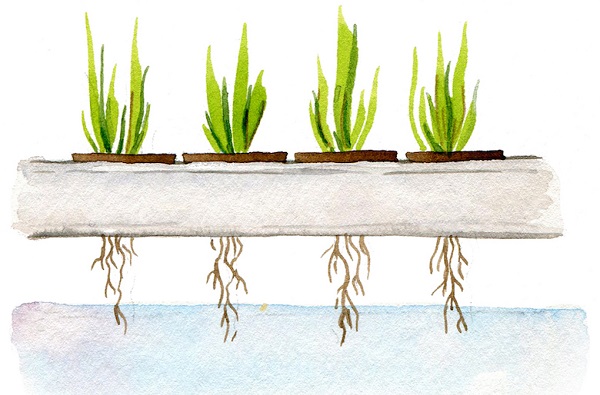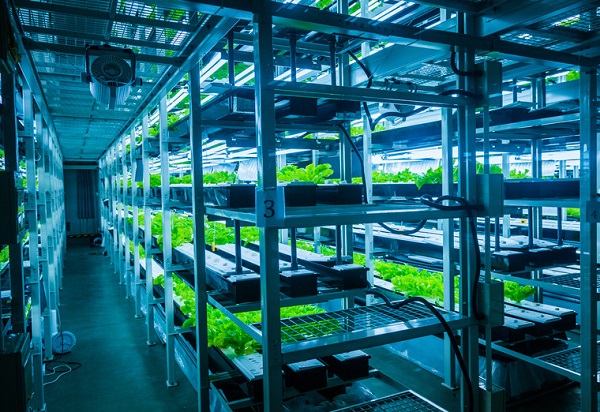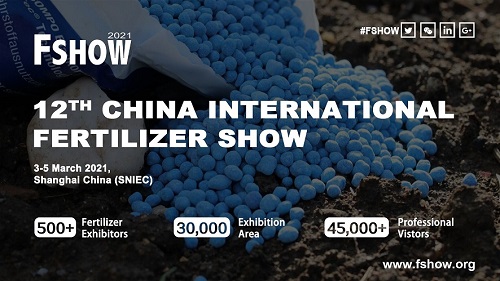
Exhibition time: 17-19 March, 2026 Shanghai, China
 中文
中文

Exhibition time: 17-19 March, 2026 Shanghai, China
 中文
中文
Urban agriculture and vertical farming, are they viable? There are question marks on efficiency, availability of useful and reasonably priced real estate, and demand for the leafy greens and herbs that are most often the crop of choice. That said, there are several high-profile companies in the U.S. that have been around for several years, e.g. AeroFarms, Plenty, and Bowery, which have raised at total of over $400M. Alongside these farm developers, we are seeing more indoor agriculture-specific technology (see iUNU’s $7.5M Series A in February for an example).
Indoor farming is attractive
In the US alone, the vertical farming market is projected to reach values of around $3 billion by 2024. Globally, the predicted value is $6.4 billion by 2023, with both figures growing at a similar rate of 24% CAGR.

Vertical farming’s value propositions include; a controlled environment, less water use, no pesticides, controlled fertilizer use, easier automation, optimized growing conditions and high-density output that can be placed in or near urban demand. In an agriculture system that will need to support another 3.25 billion people in urban environments over the next thirty years, the high volume of investment in this sector is understandable. In order to support the investment required these farms have focused on high value greens and herbs and the ability to provide a consistent predictable volume of produce all year round. Reduced water use is particularly important in markets such as EMEA where this is a more expensive input or in areas with often restricted supply but large demand such as Southern Spain or California.
Food safety is an increasingly valuable part of vertical farming, as food born illness is estimated to cost the US economy $15.6 billion per year. There have been two high profile outbreaks of E. coli in romaine lettuce in the US in the last 12 months related to washing practices. Vertical farms are controlled growing environments, and dirt-free, therefore no washing is required. As a high-value, short shelf-life, leafy-green this is a key market for vertical farming.

Underlying technologies are maturing
There are three technologies used in vertical farming; hydroponics, aeroponics, and aquaponics.
Hydroponics is the most popular method, accounting for around 70% of installed capacity, as it is the least expensive system to build, and the water substrate system is easiest to control.
Aeroponics is next, with a nutrient-rich mist substrate that feeds plants. It is generally a more expensive system to install, but water use is 40% lower than hydroponics and 95% lower that field farming. Leading installers include AeroFarms and Living Greens.
Aquaponics incorporates fish farming into the hydroponic substrate to take advantage of natural feeding and waste cycles to produce nutrients for the crops. Leaders in aquaponics include BIGH and Superior Fresh.
Indoor cultivation systems arranged by commercial development

Many of these companies have either adapted existing components or created their own. New specialized component suppliers such as Inno-3B are developing more complex automation systems, which they describe as having a high ‘unit of production per dollar of automation spent.’ The company also water cools the LEDs, providing a longer expected life.
Beyond technologies – exploring business models
Vertical farms can have many more harvests per year than traditional farming methods. For a leafy green, this can mean up to thirty harvests per year compared to five or six. This lends itself to a subscription-based model. Growing Underground, a vertical farmer based in an old air raid shelter in south London, has this arrangement with high-end restaurateurs as well as selling to retailers like Waitrose and Whole Foods. This can be extended to farming-as-a-service, as fast-growing cycles allows vertical farmers to plant crops at a client’s request, ensuring a buyer for produce before a seed is planted.
Existing food distributors are integrating vertical farmers in their supply chain, the partnership between Square Roots and Gordon Food Service is one example. The startup has agreed to build farming facilities in shipping containers located on or near Gordon Food Service distribution centers. For vertical farms, finding customers for high-value produce and having the logistics network to deliver has been a stumbling block – this partnership solves that problem. Similarly, Bonbio recently teamed up with IKEA to build container farms on IKEA sites to serve produce to the homeware chain’s restaurants.
Getting vertical farm produce to the consumer has also been taken to a logical conclusion – put the farm in front of the customer. Infarm have developed a system that can be installed in grocery stores, shopping malls, and restaurants, while Vertical Harvest have built the market and farm right where fresh produce was hard to come by. Click & Grow (an IKEA portfolio company) have put the hydroponic farm in the home with a smart home-growing kit.
Freight Farms has developed a turnkey hydroponics farm in a shipping container called the Greenery. Twenty have sold so far for $104,000, with price varying according to customization. The company estimates that ROI ranges from 2.5 to 3 years depending on the market. With the company’s hardware in place it sells Farmhand, its farming services platform, offering farm management as well as sales of farm input. Freight Farms are keen to point out that the farmer is not tied to buying inputs from Freight Farms. It is also continuing to sell produce it grows itself in select locations. This model aims to reduce the need for large project financing rounds to build out capacity, creating a hardware + software model for expansion.

Grönska Stadsodling
Grönska Stadsodling is the operator of one of Europe’s largest vertical farms and has developed the hardware it grows with from the ground-up. The company was born from the work of two engineering-minded founders. Their growing system includes a proprietary LED system which, Grönska claims, out-performs the off-the-shelf options available. The company aims to be cost competitive with greenhouses, and eventually conventional growers. To get there Grönska believes cost of automation will be a factor as vertical automation is easier than over the large footprint of a greenhouse. Combined with balancing energy costs, price of land, production scale, and matching product to market demand, there is plenty to balance in defining a vertical farm business model.
In trying to create an effective business model, Grönska Stadsodling has learned a lot about competing with the established brands. The first challenge is to reach cost parity with traditional methods of farming. The next challenge is particular to food; it is difficult to draw customers attention from a familiar and trusted branded, even when their product sits side-by-side on the supermarket shelf. The decades of marketing and trust, and associated cost, of establishing that customer base requires large marketing and branding budgets. While this is not insurmountable, another route may be to white label produce and sell to wholesalers to prevent these costs.
Who’s investing?
Investors in vertical farms are not what you would expect. There are the agriculture and food-focused investors, such as Wheatsheaf Investments (AeroFarms) or Finistere Ventures (Plenty, BioLumic), but the majority are generalists, and there is a noticeable lack of food and agricultural industry incumbents. No large agricultural OEM such as a John Deere, CNH, AGCO, or other, have placed a bet in vertical farming. However, IKEA, a food, logistics, and homewares company, has invested in Click & Grow and AeroFarms’ latest round, giving an insight into where food will be grown and who will be growing it in the future. We expect to see more agricultural corporate direct interest into these companies in the coming year.
Keep an eye on
In order to answer the question of long-term viability, we will need to keep up with the market’s response to the following questions:
Will vertical farms stay focused on niche produce and markets?
Do they compete against roof top farms that have lower energy costs and provide wider range of produce?
Will they compete against greenhouse farms that benefit from cheaper real estate, but must ship produce long distances to the urban markets and have higher costs of automation?
